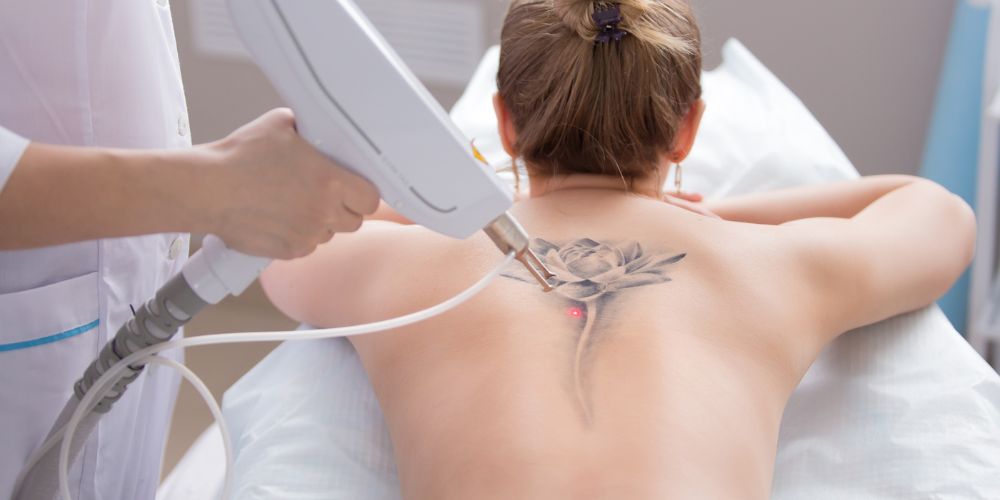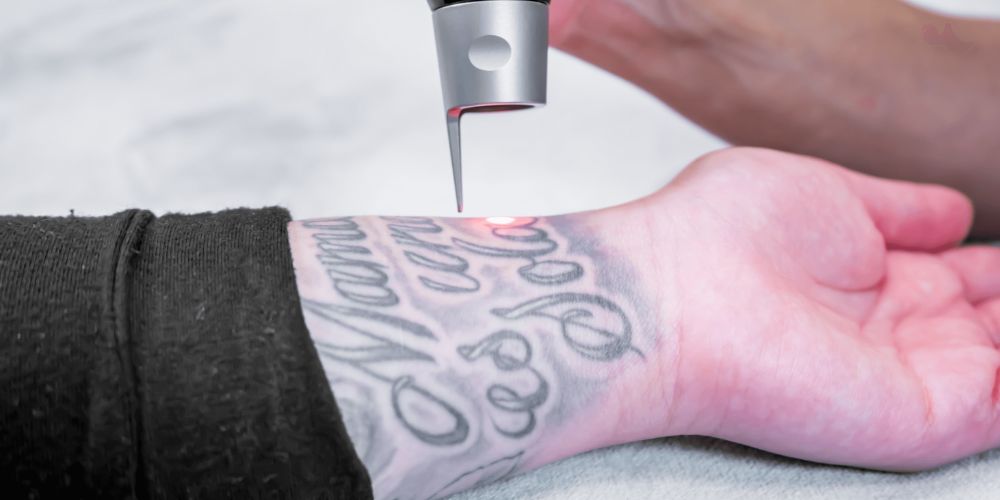Welcome to Grace & Glam Kindergarten! Kids, let’s talk about tattoos! *Wink Catch the pun!
Cleaning out Old, Unwanted Body Art
Okay, so tattoos have been a popular form of body art for as old as our history books can go. And as common as people getting tattoos is, them deciding over time that they no longer want them is also fairly a usual occurrence. And boy, is it hard to reverse them which is the exact reason why most people avoid tattooing.
Fortunately, tattoo removal has become more accessible and effective than ever before. However, tattoo removal can vary depending on your skin type. In this blog, Grace & Glamour explores the different types of skin and how they can affect tattoo removal, and what to expect during the process.
The Types of Skin Types You Know
Each skin type has its own characteristics, and these can affect how tattoos are removed because different skin types react differently to laser treatments.
As per common knowledge, there are four main types of skin: oily, dry, normal, and combination.
1. Oily Skin
People with oily skin tend to have larger pores, which makes it easier for tattoo ink to penetrate the skin but on the other hand, tattoo removal becomes more difficult for these people as the ink is deeply embedded in their skin. Additionally, Grace & Glamour dermacare maestros also inform us that such people may be more prone to scarring or hyperpigmentation after tattoo removal.
2. Dry Skin
Dry skin tends to have smaller pores. Effect: More difficult for tattoo ink to penetrate the skin but easier to remove since the ink is more likely to be closer to the surface of the skin. However, according to our dermacare maestros, these people may be more prone to skin irritation or sensitivity during the tattoo removal process.
3. Normal Skin
Normal skin represents a balanced level of oil and moisture in their skin. Tattoo removal in such cases is easier as the ink is less likely to be deeply embedded in the skin. Such people may still experience some scarring or hyperpigmentation after tattoo removal.
4. Combination Skin
People with combination skin have both oily and dry areas on their skin. This makes tattoo removal an extensive process in areas where the ink is deeply embedded and easy for other areas where ink is closer to the surface. Additionally, these people may showcase varying levels of skin irritation or sensitivity during the tattoo removal process.
Now, let’s talk about a less common skin type scale. Why? Cause it brings pigmentation into the picture.
The Fitzpatrick Scale is a classification system with skin types ranging from Type I (pale skin that burns easily) to Type VI (deeply pigmented skin).
Type I-II Skin
- People with lighter skin tones (Fitzpatrick Type I-II).
- Typically have less melanin in their skin.
- Ideal candidates for laser tattoo removal.
- Laser causes minimum skin damage.
- Take extra care of the skin after treatment, as lighter skin is more prone to scarring and hyperpigmentation.
Type III-IV Skin
- Medium skin tones (Fitzpatrick Type III-IV).
- Can be treated with laser tattoo removal.
- But the risk of hyperpigmentation and scarring is higher.
- May cause uneven skin tone because the laser may target the pigment in the skin while targeting the pigment in the ink.
- Your Grace & Glamour derma expert may use a lower energy setting to reduce the risk of complications.
Type V-VI Skin
- People with darker skin tones (Fitzpatrick Type V-VI)
- Have more melanin in their skin
- More prone to complications during laser tattoo removal.
- Darker skin can absorb too much laser energy, leading to burns and scarring.
- However, newer laser technologies and techniques have been developed to help reduce these risks.
- Your dermatologist may use a specialized laser that is designed to treat darker skin tones.
Now that you know how skin type and skin tone affect tattoo removal, let’s check out the currently available methods to remove tattoos.
1. Laser Removal
Laser is the most common method for tattoo removal. It is effective on all skin types, but it may work differently depending on the skin type. For example, people with oily skin may require more sessions of laser removal to completely remove a tattoo, while people with dry skin may require fewer sessions.
2. Surgical Removal
Surgical removal involves cutting out the tattooed skin and stitching the skin back together. This method is effective but it can also be more invasive and can leave a scar. People with oily skin may be more prone to scarring after surgical removal as compared to people with dry skin.
3. Topical Creams
Topical creams are applied directly to the skin and work by breaking down the ink particles in the skin. This is an effective method for tattoo removal, but it may take longer than other methods. Also, people with oily skin are less likely to respond to topical creams, as the cream may not penetrate the skin as deeply.
Regardless of the method you choose, Grace & Glamour derma pros suggest keeping in mind to stay out of the sun, follow aftercare instructions to the T and most importantly, Be patient!
Pop the balloons for old tats! Erase your tattoo regrets with our safe and reliable tattoo removal services, now available with special salon offers at Grace & Glamour – the best salon in Gurgaon!




